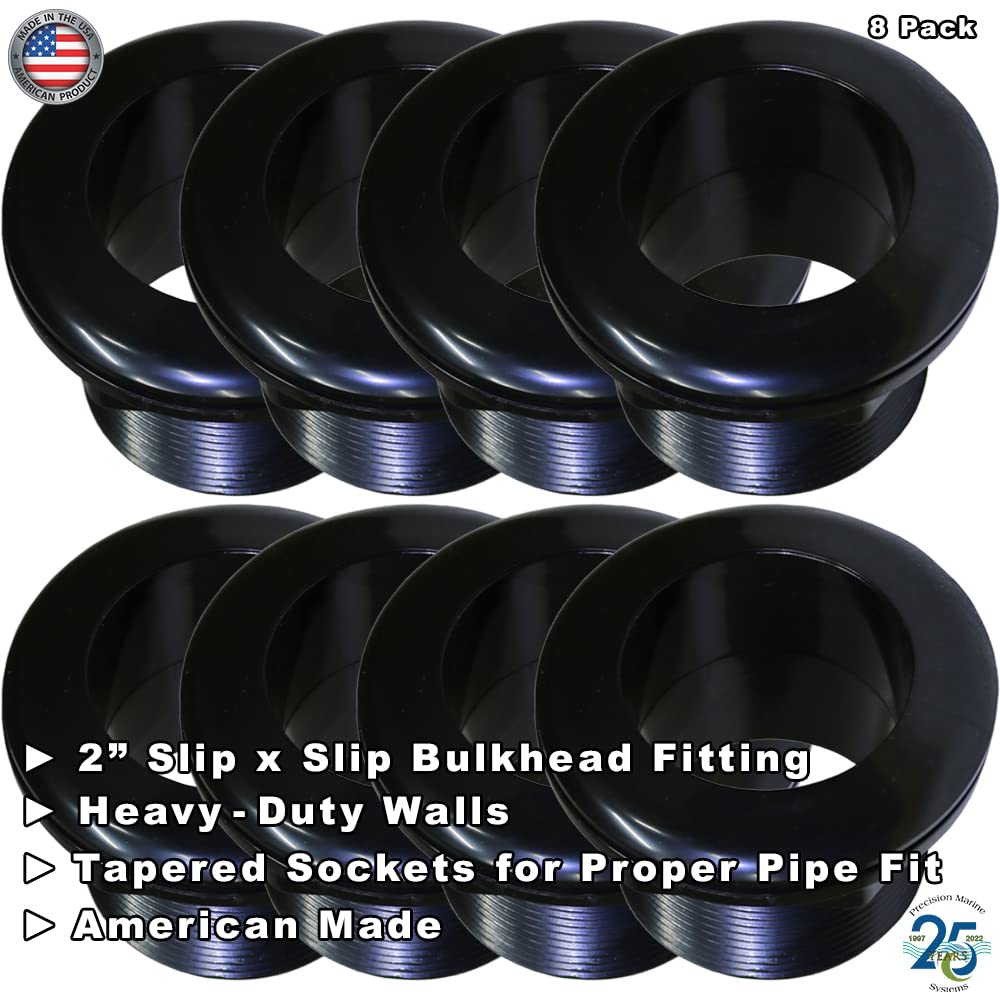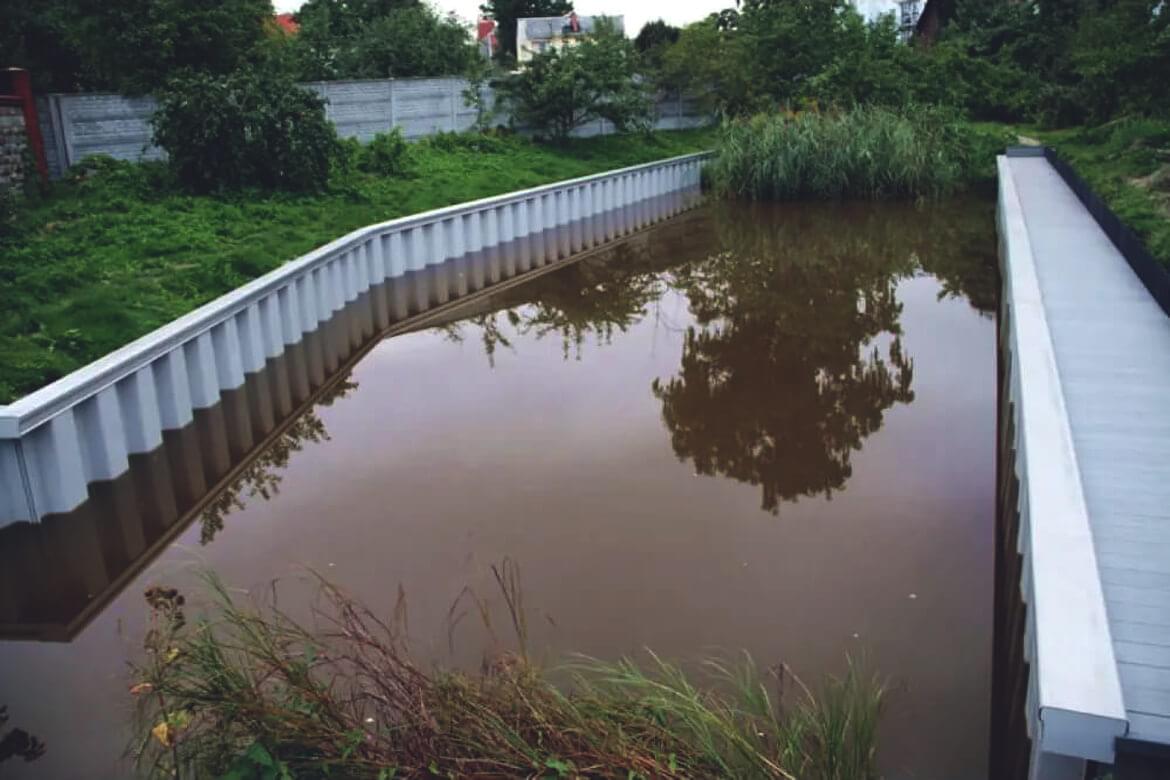Bulkhead on Lake Livingston: A Detailed Guide to Current Building Practices
Wiki Article
Exploring the Different Uses Bulkhead Frameworks in Modern Design
Bulkhead frameworks play a significant role in modern style, offering both functional and visual functions. They can specify spaces, enhance storage space remedies, and improve lights. In industrial settings, they function as focal factors that mirror brand name identity - Bulkhead on Lake Livingston. Additionally, their combination usually supports audio management and sustainable practices. Comprehending the full extent of their applications discloses much concerning contemporary design trends and user experience. What ingenious usages of bulkheads might arise in the future?Defining Bulkhead Structures
Bulkhead structures play a critical function in modern-day style, serving as crucial elements in different building designs. These structures are normally defined as elevated ceilings or platforms, typically utilized to conceal mechanical systems, wiring, or pipes. Bulkheads can be found in both household and commercial setups, where they provide a smooth mix of functionality and aesthetics. Their layout can incorporate illumination fixtures and various other decorative elements, boosting the general visual charm of an area.Generally created from products such as steel, wood, or drywall, bulkheads can be tailored to fit the architectural design and demands of the building (Bulkhead on Lake Livingston). They offer not only to hide unsightly framework however additionally to produce specified areas within open spaces. By taking care of the circulation of a space, bulkheads add to the spatial organization, making them a significant aspect of contemporary building technique. As a result, their definition encapsulates both sensible and visual dimensions
Useful Applications in Residential Design
Bulkhead structures play a necessary function in residential layout by helping with room optimization methods that optimize usable areas. Furthermore, they add aesthetic style aspects that enhance the aesthetic appeal of living areas. Additionally, these frameworks offer crucial structural support remedies, guaranteeing the stability and safety of the home.Area Optimization Techniques
As contemporary household designs progressively focus on reliable use room, innovative methods emerge to take full advantage of performance without compromising visual appeals. One noticeable approach includes the assimilation of bulkhead frameworks, which can delineate areas while giving essential storage space solutions. These frameworks can be used to create vertical storage space units that enhance both organization and availability. In addition, multi-functional furniture, such as exchangeable sofas and foldable tables, complements bulkhead designs, enabling spaces to adapt to varying needs. Open flooring plans further optimize spatial circulation, urging versatility in operation. Including built-in shelving and recessed illumination within bulkheads likewise adds to a structured atmosphere, ensuring that fully of room is utilized successfully and harmoniously within the general design.Aesthetic Style Aspects

Architectural Support Solutions
In modern-day residential layout, an efficient architectural support service is essential for preserving the integrity of areas while optimizing design and functionality. Bulkhead structures play a considerable function in this circumstance, working as both assistance and partitioning elements. They can hide mechanical systems, such as pipes and electrical wiring, while giving support to the ceiling and flooring systems. By strategically positioning bulkheads, architects can produce specified areas within open floor strategies, enhancing functionality without endangering architectural security. In addition, these frameworks can accommodate lighting fixtures, contributing to both appearances and usefulness. To summarize, bulkhead frameworks are important in residential design, offering functional support remedies that improve both the performance and visual appeal of living areas.Enhancing Aesthetics in Industrial Areas
When industrial spaces embrace innovative bulkhead frameworks, they not just specify physical boundaries yet also substantially boost the general aesthetics of the environment. These architectural aspects act as aesthetic focal points, drawing focus and creating a feeling of intrigue. By including varied materials such as glass, wood, or metal, bulkheads can show a brand's identification and objective, adding to a cohesive style.Moreover, the tactical positioning of bulkheads can control light and darkness, adding deepness and measurement to or else level rooms. This interplay can transform a business area right into an inviting atmosphere, motivating customer involvement. Furthermore, using shade and appearance in bulkhead layout can evoke details emotions, improving the overall client experience. Inevitably, the thoughtful combination of bulkhead structures raises the aesthetic appeal of industrial spaces, making them not only practical but likewise visually captivating, thereby cultivating a long lasting impact on site visitors.
Acoustic Performance and Noise Administration
Reliable acoustic performance plays an essential role in modern design, specifically within commercial rooms where audio monitoring is crucial. Bulkhead frameworks can significantly improve acoustic top qualities by soaking up audio, reducing reverberation, and mitigating noise transfer between areas. These functions are specifically valuable in environments such as workplaces, dining establishments, and cinemas, where clear communication and a pleasurable auditory experience are paramount.The strategic placement and design of bulkheads can help produce sound-buffer areas, successfully isolating loud areas from quieter ones. Products used in bulkhead construction, such as acoustic panels and soft surfaces, add to their sound-dampening capacities. In addition, the unification of bulkheads permits for the assimilation of sound-absorbing elements without endangering aesthetic charm. By dealing with acoustic efficiency, engineers can develop harmonious settings that boost comfort, improve individual experience, and promote performance, visit homepage making bulkheads a vital component in the style of modern business spaces.
Incorporating Bulkheads for Effective Room Utilization
Although frequently ignored, the combination of bulkheads in building design can considerably enhance room usage in modern-day structures. These architectural aspects serve numerous practical purposes, offering a way to conceal mechanical systems, electrical wiring, and plumbing without endangering appearances. By tactically positioning bulkheads, designers can develop specified locations within open floor plans, consequently facilitating better company and flow.Bulkheads can incorporate storage space solutions and illumination functions, making the most of the performance of otherwise thrown away vertical space. In property setups, they may define zones such as kitchens or living areas, while in industrial spaces, they can enhance the efficiency of formats by plainly noting paths and workspace.
Inevitably, the thoughtful combination of bulkheads contributes to a more aesthetically attractive and organized environment, enabling adaptable rooms that can advance with the demands of their occupants. This approach not just optimizes room yet additionally cultivates an extra harmonious communication between type and feature.
Bulkheads in Public Architecture

Building Aesthetic Enhancements
While many building components goal for functionality, bulkheads in public design offer a dual purpose by boosting visual appeal. These frameworks frequently develop visual interest with their style, incorporating perfectly with surrounding aspects. By utilizing various products, textures, and shades, bulkheads can add to an unique identification for public areas, such as airports, galleries, and collections. Their strategic positioning assists to define locations, directing site visitors while adding depth to the total style. Additionally, bulkheads can highlight lights, creating vibrant atmospheres that change throughout the day. This visual improvement not just boosts the site visitor experience but likewise promotes a sense of location, making bulkheads a vital consideration in modern public style. In general, bulkheads personify the combination of type and feature.
Structural Assistance Solutions
As architects seek cutting-edge methods to improve the architectural stability of public areas, bulkheads emerge as crucial elements in the layout and building procedure. These structures supply crucial assistance, particularly in locations based on heavy foot web traffic or vibrant tons. By distributing weight evenly, bulkheads help protect against architectural failing while permitting versatile design alternatives. In big venues, such as arenas and convention centers, bulkheads are often integrated right into the overall building framework, guaranteeing stability and security. Furthermore, they can facilitate the consolidation of utilities about his and mechanical systems, adding to the performance of area use. Ultimately, bulkheads stand for an important option in modern-day public style, strengthening both capability and security in community-focused settings.Environmental Defense Actions
Including environmental management measures right into public architecture has become significantly essential as metropolitan designers prioritize sustainability together with architectural support. Bulkhead structures serve a double objective hereof, serving as obstacles versus erosion and flooding while all at once improving the visual allure of city landscapes. Their design frequently consists of natural aspects such as vegetation, which can improve air high quality and give habitats for wildlife. Additionally, bulkheads can be crafted with permeable products that permit water absorption, lowering drainage and promoting groundwater recharge. This click to read assimilation of ecological factors to consider not just preserves the environment but also cultivates community resilience against environment adjustment. By making use of bulkheads properly, architects contribute to sustainable city development that aligns with contemporary environmental goals.Future Fads in Bulkhead Design
Emerging fads in bulkhead design reflect a growing emphasis on sustainability, technology, and capability in modern style. Developers are progressively incorporating environment-friendly materials, such as recycled compounds and bioplastics, to decrease environmental impact. On top of that, the assimilation of wise modern technology is coming to be prevalent, allowing bulkheads to serve multi-functional objectives, consisting of energy storage space and climate control.
In metropolitan setups, modular bulkhead systems are gaining grip, offering versatility in design and convenience of installment. These systems can be adapted to different landscapes, enabling for efficient space application. Furthermore, aesthetic factors to consider are progressing; bulkheads are now being made to improve visual charm, usually incorporating creative components that resonate with neighborhood culture.
As environment resilience ends up being a priority, future bulkhead styles will likely prioritize flood protection and stormwater monitoring, guaranteeing architectural honesty while dealing with environmental challenges. This change symbolizes a holistic method to design that meets both ecological responsibilities and human needs.
Regularly Asked Concerns
What Products Are Frequently Made Use Of for Bulkhead Building?
Typical products for bulkhead construction include concrete, steel, hardwood, and composite materials. These options offer durability, architectural integrity, and resistance to ecological aspects, making them appropriate for numerous applications in building and design jobs.Just How Do Bulkheads Affect Structure Power Performance?
Bulkheads boost constructing energy effectiveness by supplying thermal insulation and lowering air leakage (Bulkhead on Lake Livingston). They assist maintain interior temperatures, thereby reducing home heating and cooling needs, inevitably leading to reduced energy expenses and enhanced ecological sustainabilityExist Any Building Regulations Specific to Bulkhead Frameworks?
Yes, developing codes details to bulkhead frameworks exist, varying by location. These regulations generally deal with safety, structural honesty, and access, making sure that bulkheads satisfy needed standards for building and construction and layout within a provided jurisdiction.Can Bulkheads Be Conveniently Customized or Removed Later?
Bulkheads can typically be changed or removed, depending on their style and building and construction. However, such alterations may require cautious planning and adherence to structure codes to guarantee architectural integrity and safety are maintained throughout the process.What Are the Costs Linked With Mounting Bulkhead Structures?
The prices connected with installing bulkhead frameworks can differ considerably, typically affected by materials, layout complexity, and labor. Typically, expenditures range from modest to high, depending upon the job's particular requirements and area.Bulkhead structures play an important function in modern-day style, offering as essential parts in different structure designs. Bulkhead structures play a vital function in property design by helping with room optimization strategies that make the most of functional locations. Usually ignored, the combination of bulkheads in architectural style can significantly boost room use in modern buildings. As engineers seek cutting-edge methods to improve the architectural honesty of public areas, bulkheads arise as important components in the layout and construction process. The prices linked with installing bulkhead frameworks can differ considerably, normally influenced by products, design complexity, and labor.
Report this wiki page